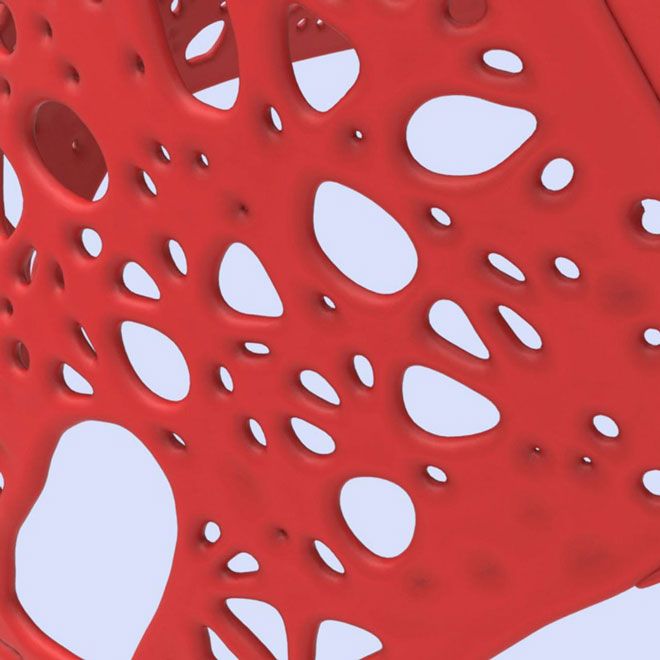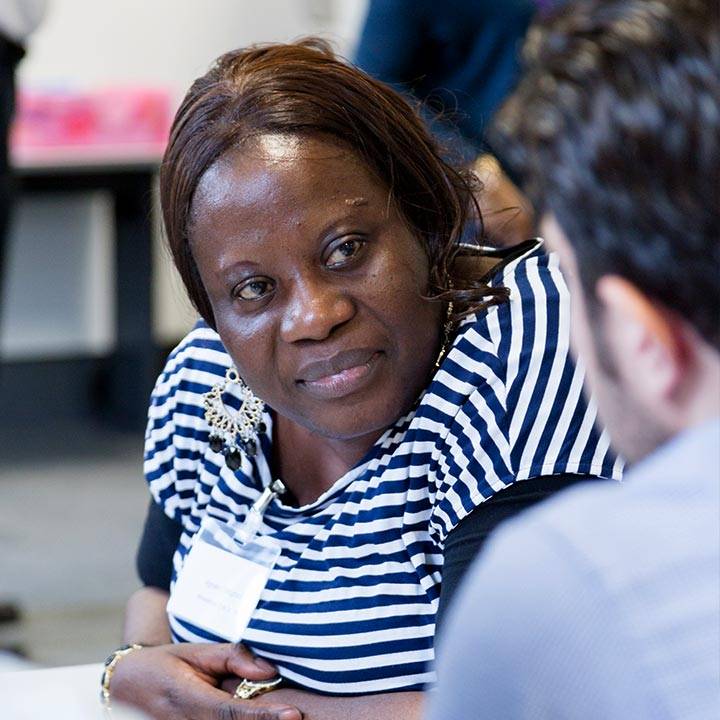Andiamo, 3D scanning for children's orthotics
 Naveed and Samiya Parvez are the founders of Andiamo, a company named in memory of their son, Diamo who had cerebral palsy and sadly passed away in March 2012.
Naveed and Samiya Parvez are the founders of Andiamo, a company named in memory of their son, Diamo who had cerebral palsy and sadly passed away in March 2012.
Samiya was Diamo's main carer and is also a Kingston University alumna. Andiamo was born out of personal experience of Diamo's treatments and is a story of parents fighting for their child to get everything he needs.
Project summary
This collaboration between Product Science: Andiamo and the Design School at Kingston University sought to change ways of acquiring orthotics for disabled children and reducing the waiting time for these from 13 weeks to 48 hours, by exploring the use of advanced 3D scanning and digital printing techniques.
Orthotics are artificial supports for limbs or the spine, such as splints for ankles and wrists or back braces.
Their collaboration with Kingston helped Product Science to explore manufacturing efficiencies in 3D scanning and printing technology, production cost savings, manufacturing accuracies, and also the potential for greatly improved lead times.
The challenge
Handheld scanners have been identified as solving some, if not all, of the issues of using current 3D scanning technology on disabled children. However, there was a need to validate their efficacy based on scientific evidence, and Kingston had the expertise and resources necessary to conduct this research.
Current 3D scanners are not easily used due to the subject being scanned having to stand and also the use of land marking. This a scanner and appropriate techniques needed to be developed that combined high-speed data capture, accuracy, universal data format, the ability to pick up different skin tones, ease of use, affordability and transportability for use in places such as the child's home or school.
Impact on the business
The study has produced robust evidence that handheld scanners have great potential to be the state-of-the-art technology for rapid, hassle-free and affordable use on disabled children for the purpose of designing disabled children's orthotics. This evidence has confirmed the market potential for handheld scanners, and consequently boosted the development phase of the company's service platform for speeding up the scan process.
"In the next 12 months we will work with at least 20 families to design the service with them," said Naveed Parvez, Andiamo co-founder
The project has also confirmed the market opportunities in the health industry and revealed the size of that market, which was bigger than the company initially thought.
The collaboration with Kingston University provided access to many different areas where 3D printing is used. This interaction helped nurture knowledge exchange with disciplines seemingly unrelated to the company's research area, and inspired the creation of concepts and methodologies that can transfer to 3D scanning for health.
In addition, the collaboration with Kingston helped the company to identify concepts that may be transferable to their research and development activity.
"We saw a 3D knitting machine and suddenly there was this idea; if you can knit things in 3D and you can change how stiff the fabric is."
Reflections on the collaboration
The collaboration was very smooth and successful for both partners. The company was surprised to see the academics sharing their enthusiasm for designing the service and they were surprised by their efficiency.
The Kingston team also introduced the company to the importance of design as a research approach as well as an aesthetic element that should not be disregarded during design process.
"We hadn't fully appreciated how much of an impact people who only think about design could have on the aesthetics of our product."
The Design School has a long tradition of working with both large companies and SMEs and therefore were able to apply design and also understand the commercial consequences of the decisions they make with the business. This common ground further strengthened the success of the collaboration.
Future directions
Product Science will continue their collaboration with Kingston integrating into the design of orthotics elements of fashion design, particularly focusing on making orthotics more appealing visually and converting them into something that can be regarded as a fashion accessory.
They are also planning to seek collaboration with Service Designers in order to improve the interactions and the journey of their clients through their service platform.
Read more success stories.
Contact us
Partnerships and Business Engagement Team

Contact us
Partnerships and Business Engagement Team